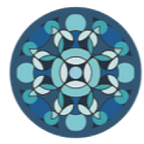Is there a battle raging between big agencies and niche agencies?
If so, niche agencies are in no way the underdog.
You’ve probably heard it said that to a hammer everything looks like a nail, but if you’re serious about renovating or building something that will last, you won’t always be able to bash it out with just a hammer. You’ll need a good toolkit, one which consists of a variety of tools depending on what structure and improvements are needed.
There are two types of consulting houses that exist.
- The big-name consultants that have been around for many years
- Niche consulting houses like us that focus on a specific part of a business
What’s amazing about a big-name consultancy is that you get a wealth of knowledge that they’ve gathered working across different industries, which has allowed them to find the most versatile tool in the toolbox. The one that works the best most of the time for many clients.
Unfortunately, this can lead to a cookie-cutter approach to a problem that you are facing.
Whilst this is a great short-term fix and can give you results tomorrow in most cases. These results aren’t long-lived because they haven’t been tailored to your business and most importantly your customer!
I’m a Service Designer. When someone is working with a client, they bring me on to structure or facilitate a session that can assist with the management of their specific funnel of problems. Often, Kaleidoscope is asked to come in after a big agency has come in, sold an idea/solution and then left. This method worked for other globally recognised companies previously so it should work again. Sadly, this is not always the case. A new way of working is needed.
The Fusion Framework is the superior mixed method that you’re missing
Underpinned by Design Thinking, Agile and Lean 6 Sigma we have created a multifunctional tool we’ve dubbed The Fusion Framework. We realised that these don’t have to be competing methodologies but are complementary solutions that can be blended and customised. Drawing on the strengths of all three creates a unique toolkit that is tailored to your organisation’s specific challenges.
Success requires knowledge of the crux and the context of what’s causing your problems. In a nutshell, the Fusion Framework uses the following process flow: Understand, Dig Deeper, Define, Create, Test and Deliver, but even this is not a fixed process. It’s agile and drawing on principles of Design Thinking and Lean 6 Sigma allows it to be as adaptable as needed for maximum return on investment.
Pain point number one for most organisations is how to prioritise the pain points and what we solve and when for the maximum benefit of the business and the client (more on that in my previous article :
Cookie-cutter won’t cut it
As a start to solutioning we found there are two types of problems/tensions to solve for: People or human-centred tensions and process tensions.
Solving human-centred tensions and process-related challenges require different approaches. A one-size-fits-all approach won’t always work.
Cookie-cutter consulting can work but it can also be ineffective or unsustainable at times because pain point solution processes are not one-size-fits-all. Being hands on isn’t a nice to have, it’s the most efficient and consistent way to problem-solve. Many consultant’s will exit stage left once they have made a diagnosis of what the tensions and inefficiencies are. At Kaleidoscope, we like to walk the journey towards solutions with the client so that the process can be tweaked and adjusted as things develop. How often in life do things go exactly according to plan?
Process problems are completely different to people problems. Therefore, they need different approaches — thinking designed in such a way as to address their unique challenges and complexities. Cookie-cutter consulting won’t necessarily be able to, well… cut it.
Who is who in the waste elimination zoo?
Some big businesses are doing a deep dive on Agile or a deep dive on Lean 6 Sigma but not taking other methodologies into consideration, and that’s a bit like fishing in one spot with one type of bait and hoping to catch all the fish on the same line.
Who is the user/customer/stakeholders here? What do they look like, what are their needs, what does their world look like and how do we best understand this? Tools in the design thinking toolkit are best suited to assist here. To find out more about these tools give us a shout.
The next important step is to look at what success looks like for us once we solve this so we have a clear end point for this process, clear retro points and clear milestone check-ins. If you don’t get this right you can get stuck in a loop forever and if you ask any software developers or programmer — this is not a fun place to be or to solution yourself out of.
Providing a solution or giving good advice is great but going on the solution-finding process with you is undeniably better.
We’d love to start (and complete) that journey with you!
